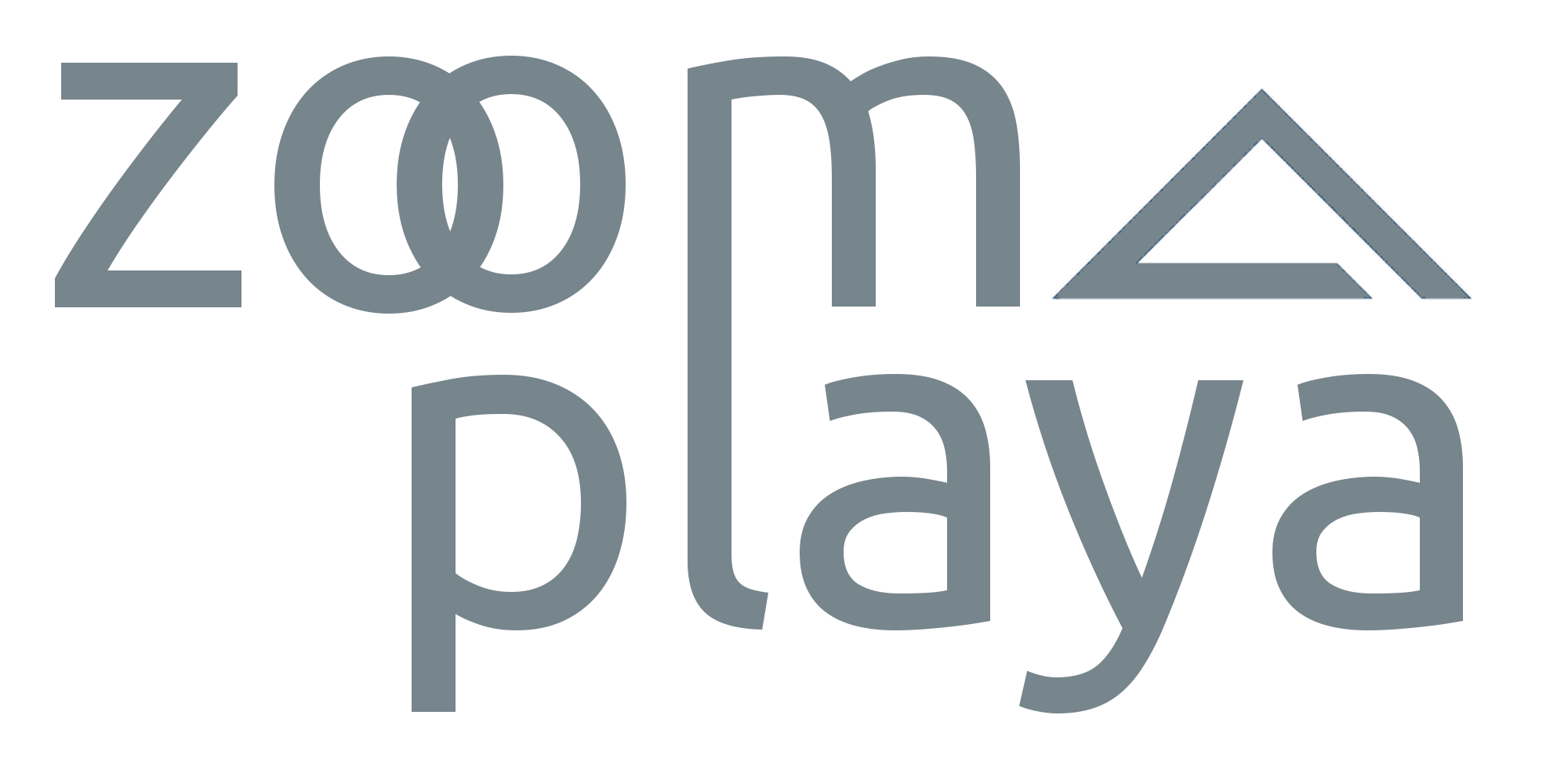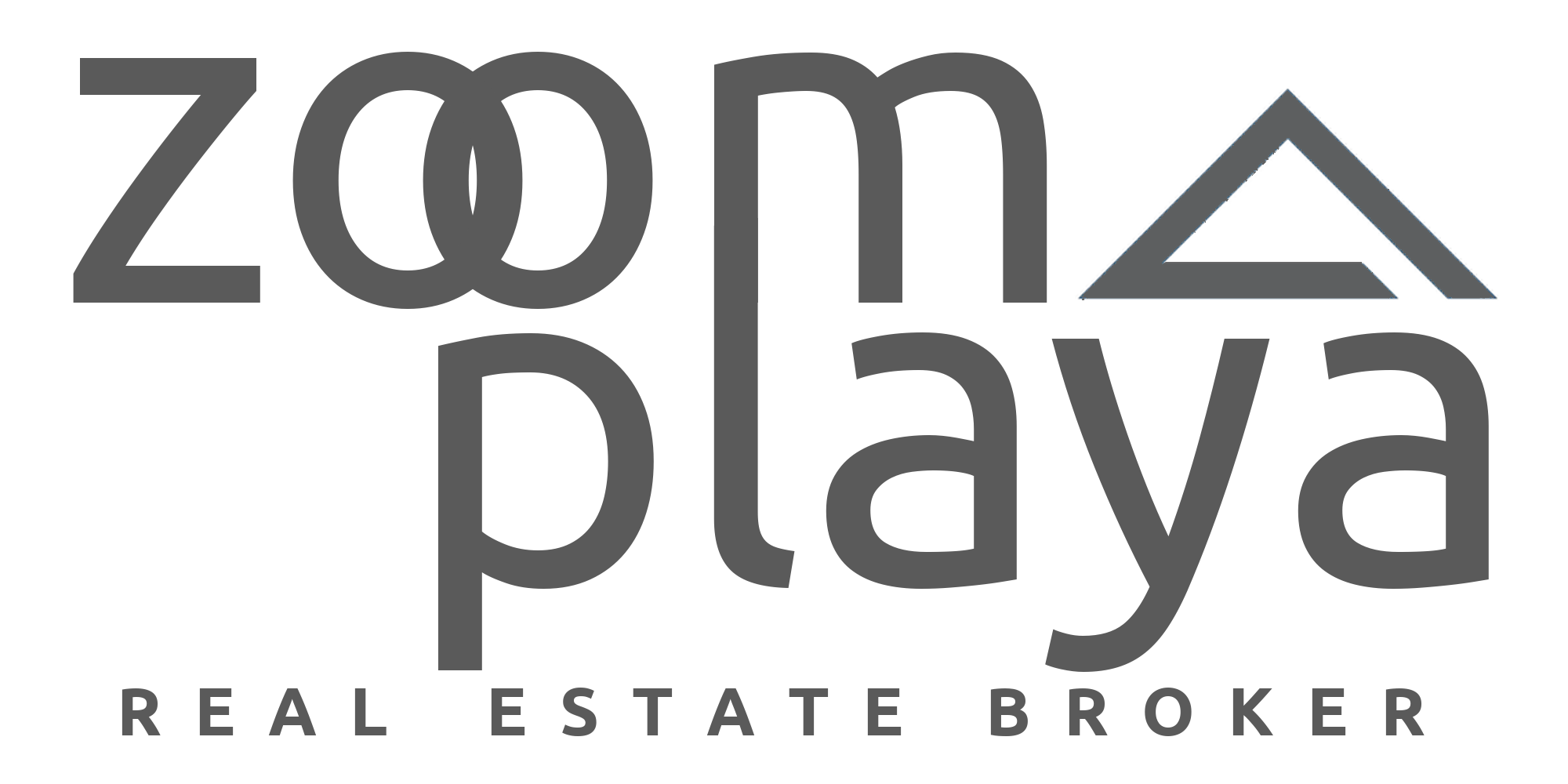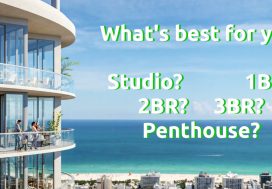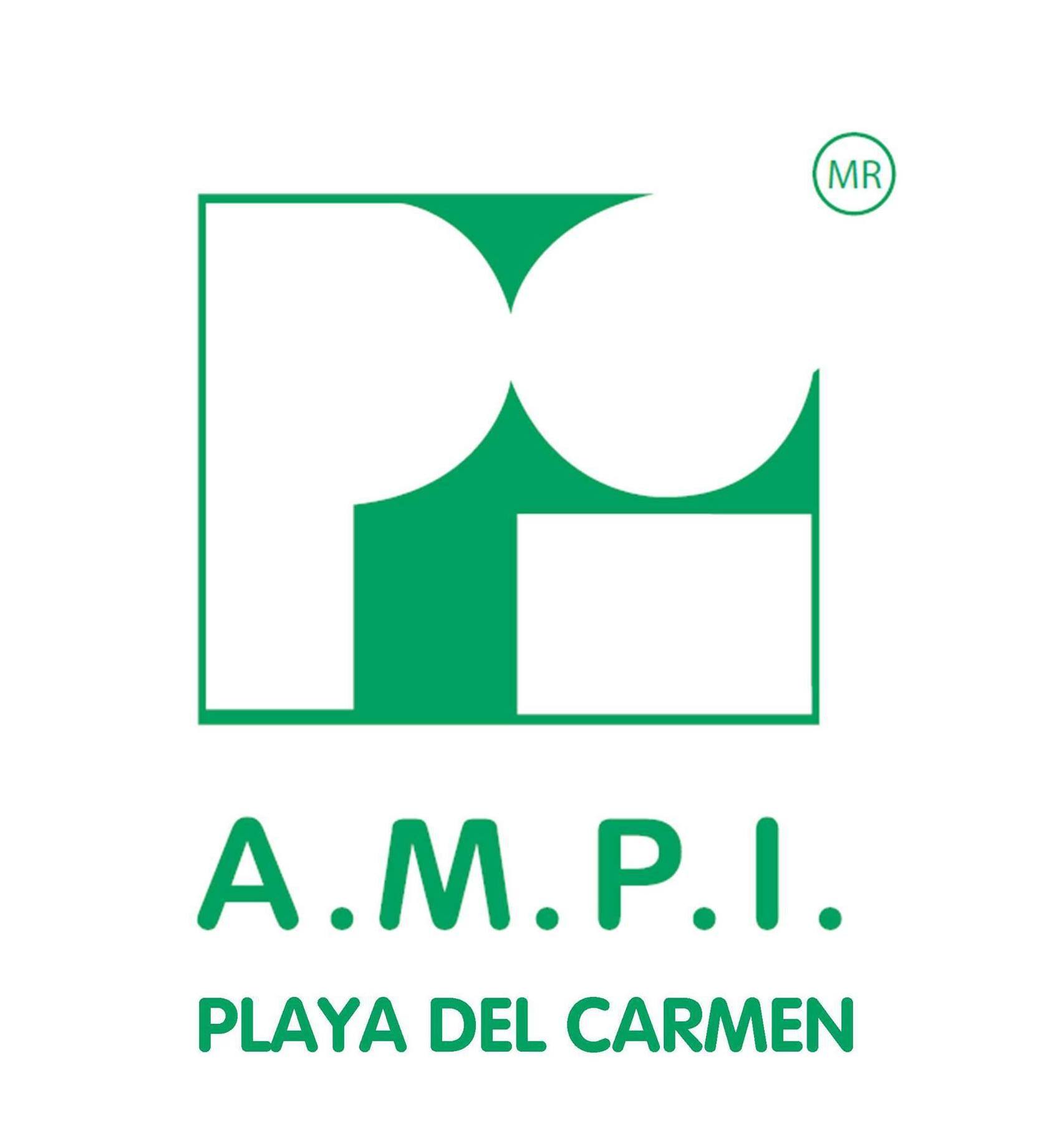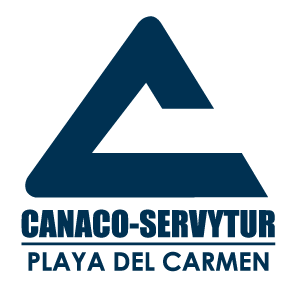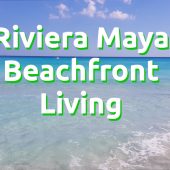Real Estate Financing Options for Foreigners in Riviera Maya in 2024-2025
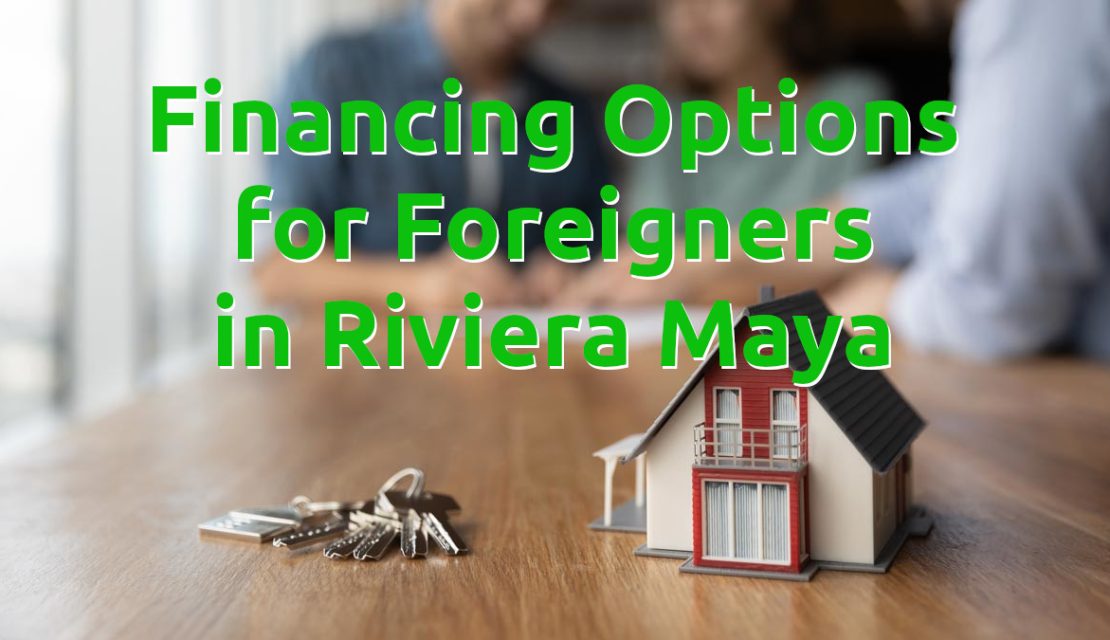
Investing in Riviera Maya real estate is an exciting opportunity for foreigners looking to own a piece of paradise and easily get their residency. Whether you’re eyeing a luxurious condo in Playa del Carmen, a serene retreat in Tulum’s buyer’s market, or a beachfront property in Puerto Morelos, understanding the costs of living and various financing options available to you is crucial. Let’s dive into the comprehensive guide on how to finance your dream property in Mexico’s Riviera Maya in 2024 and for the foreseeable future.
- Why Invest in Mexico’s Riviera Maya?
- Pre-Sale vs. Re-Sale Properties
- Importance of a Certified Real Estate Agency
- Financing Options for Foreigners
- Cash Purchase
- Pros & Cons
- Example
- Mexican Bank Financing
- Process and Requirements
- Interest rates and Terms
- Pros & Cons
- Example
- US or Canadian Cross-Border Bank Financing
- Corss-Border financing details
- Pros & Cons
- Steps to Secure Financing
- Example
- Comparing to Mexican Banks Financing
- Personal Loans and Crowdfunding Financing
- Personal Loans
- Crowdfunding
- Pros & Cons
- Example
- Developer Financing
- How Developer Financing Works
- Pros & Cons
- Example
- Step by Step Process
- Compared to Traditional Financing
- Home Equity Financing
- What is Home Equity Financing?
- Types of Home Equity
- Pros & Cons
- Example
- Using HELOC
- Steps to Secure Home Equity Financing
- Comparing to Other Financing Options
- Financing with Your Canadian RRSP or USA’s IRA and/or 401K
- Canadian RRSP
- USA’s IRA
- USA’s 401K
- Pros & Cons
- Example
- Steps to use Retirement Funds
- Comparing to Other Financing Options
- Private Financing
- What is Private Financing
- Types of Private Financing
- Pros & Cons
- Steps to Secure Private Financing
- Comparing to Other Financing Options
- Cash Purchase
- Comparing Financing Options
- 10 Tips for a Successful Investment
- Conclusion
- FAQs
Why Invest in Mexico’s Riviera Maya?
Riviera Maya is renowned for its stunning beaches, vibrant culture, and booming real estate market. The region has seen significant growth over the past decade, making it an attractive destination for investors. With its strategic location, thriving tourism, and robust infrastructure, Riviera Maya in Mexico offers excellent investment potential for anyone looking to invest in the Caribbean Paradise or finally make the move to live or retire in the Riviera Maya.
Pre-Sale vs Re-Sale Properties
Buying a property typically means purchasing a fully constructed and ready-for-occupancy real estate asset also called a re-sale property. This process involves visiting the property, inspecting its condition, evaluating the neighborhood, and assessing the immediate availability of amenities. The transaction usually follows a relatively straightforward process where, after negotiations and due diligence, the buyer and seller agree on a price, sign a contract, and the buyer takes ownership. The benefits of buying a ready property include immediate possession, the ability to inspect the finished product, and the elimination of uncertainties regarding construction quality and timeline.
In contrast, buying a pre-sale property involves purchasing real estate that is not yet completed or, in some cases, not yet started. This type of investment requires the buyers to commit based on plans, models, and the developer’s reputation. The primary advantage of pre-sale properties is the potential for lower prices compared to finished units, as developers often offer discounts to secure early funding for the project. Additionally, pre-sale buyers might have the opportunity to customize certain aspects of the property, such as finishes and layouts, which can add a personal touch to the final product.
In either case, buyers must conduct thorough due diligence on the property and the developer’s track record and the project’s feasibility. Despite these risks, pre-sale properties can be a lucrative investment, especially in markets with rapid growth such as Riviera Maya, as they often appreciate significantly by the time they are ready for occupancy.
Importance of a Certified Real Estate Agency
Navigating the real estate market in a foreign country can be daunting. That’s where certified real estate agencies like Zoom Playa Real Estate come into play. They provide expert guidance, ensure legal compliance, and help you find the best deals. Working with a certified agency ensures a smooth and secure transaction process. Click here to find out how Zoom Playa can help you become a homeowner or investor in Mexico’s Riviera Maya.
Financing Options for Foreigners
Foreigners have multiple financing options to choose from when purchasing real estate in Riviera Maya. Each method comes with its unique benefits and considerations. Let’s explore eight of these options in detail.
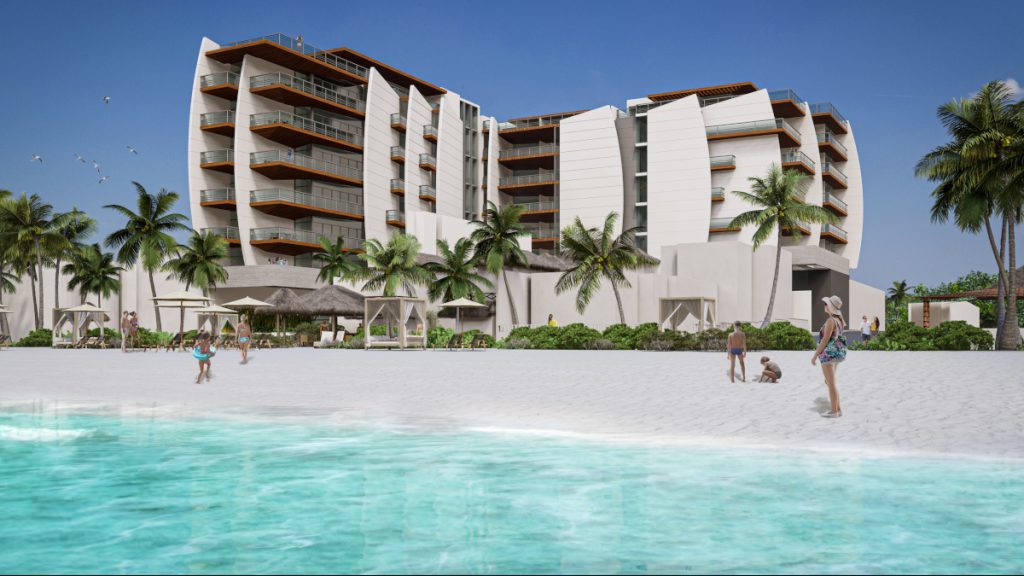
Priced at U$982,400 for 153m² 3BR to U$2,414,000 for 346m² 4BR Penthouse.
1 – Cash Purchase
A cash purchase is exactly what it sounds like – buying a property by paying the full amount upfront without the need for a mortgage or any other type of financing. This method has its own set of advantages and disadvantages. There is however a difference in buying a re-sale and a pre-sale property with cash.
Pros:
- No Debt or Interest Payments:
- Since you’re paying the full amount in cash, you won’t have to worry about monthly mortgage payments or interest rates. This means significant savings over the long term.
- Strong Negotiating Power:
- Sellers often prefer cash buyers because the transaction is simpler and faster, without the risk of a mortgage falling through. This can give you more leverage in negotiating a lower purchase price or better terms.
- Faster Closing Process:
- Without the need for mortgage approval and underwriting, the closing process can be much quicker. This can be a significant advantage if you’re looking to move into the property or start renting it out as soon as possible.
- Immediate Ownership:
- Once the purchase is complete, you own the property outright. This gives you full control over it from day one.
Cons:
- Requires Substantial Liquid Assets:
- A cash purchase means you need to have a significant amount of money available. For a $300,000 USD re-sale property, you’ll need to have that amount ready to go, which can be a challenge for many buyers. In pre-sales you will need a minimum of 30% down payment ready.
- Opportunity Cost:
- Tying up a large amount of cash in a property means that money is not available for other investments. Depending on your financial situation and investment strategy, this could mean missing out on potentially higher returns elsewhere.
- Lack of Leverage:
- One of the benefits of using a mortgage is the ability to leverage your investment. By borrowing money to buy the property, you can potentially increase your return on investment if the property’s value appreciates.
Example:
Let’s say you’re looking to buy a condo in Playa del Carmen for $300,000 USD. If you decide to go with a cash purchase, you’ll need to have $300,000 USD available to pay upfront. In the case of a pre-sale you would need a minimum of $90,000 USD (30%) down payment. Once the transaction is complete, you’ll own the condo outright, with no monthly mortgage payments to worry about.
In summary, a cash purchase can be a great option if you have the necessary funds and want to avoid debt. It offers several advantages, including faster transactions and stronger negotiating power, but it’s important to consider the potential downsides, such as the opportunity cost and the need for substantial liquid assets.
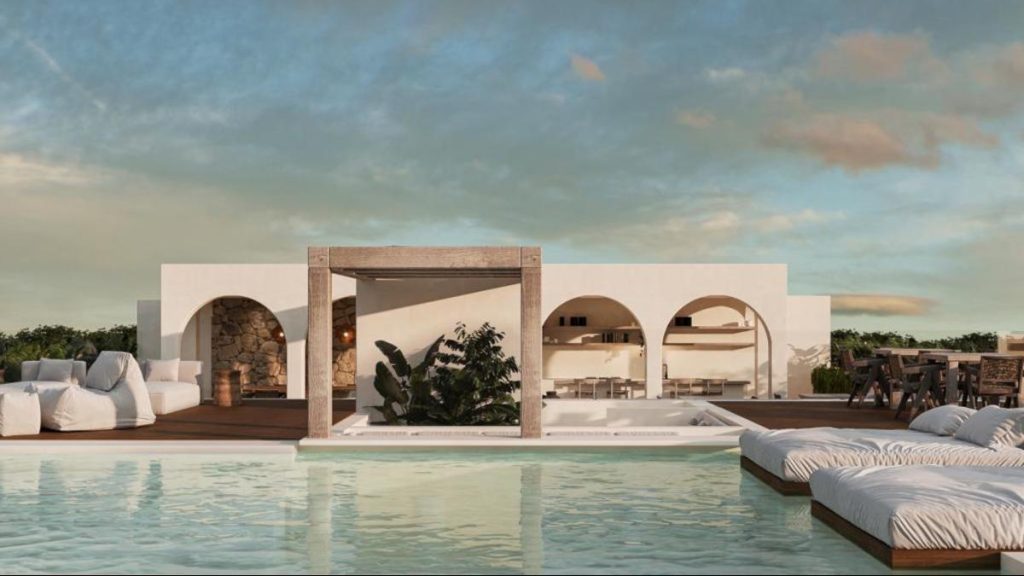
Priced at U$351,400 for 71m² 2BR to U$752,900 for 118m² 2BR Penthouse Condo.
2 – Mexican Bank Financing
Mexican bank financing is a common option for foreigners with residency and credit history looking to purchase an existing property in Riviera Maya, Mexico. Banks usually do not offer mortgages for pre-sale properties. This involves obtaining a mortgage from a Mexican bank to finance the purchase. Here’s what you need to know:
Process and Requirements:
- Proof of Income and Financial Stability:
- To qualify for a mortgage, you’ll need to provide proof of income. This can include pay stubs, tax returns, and bank statements. The bank will assess your financial stability and ability to make the monthly payments.
- Legal Residency or Valid Tourist Visa:
- While some banks might require you to have legal residency in Mexico, others may accept a valid tourist visa. Requirements can vary, so it’s important to check with the specific bank.
- Credit History:
- Your credit history, both in your home country and in Mexico, will be evaluated. A good credit score can improve your chances of getting approved and securing better terms.
- Down Payment:
- Mexican banks typically require a minimum down payment of 20% to 30% of the property’s value. This means for a $300,000 USD property, you might need to pay $60,000 to $90,000 USD upfront.
Interest Rates and Terms:
- Interest Rates:
- Annual interest rates for mortgages from Mexican banks generally range from 7% to 12%. The rate you receive will depend on your creditworthiness and the bank’s policies.
- Loan Terms:
- Mortgage terms can vary but typically range from 10 to 25 years. The length of the loan term will affect your monthly payments and the total interest paid over the life of the loan.
Pros:
- Spread Out Payments:
- Instead of paying the full amount upfront, you can spread out the cost over several years, making it more manageable.
- Leverage:
- Using a mortgage allows you to leverage your investment. If the property value increases, you can potentially see a higher return on investment.
- Build Credit in Mexico:
- Successfully managing a mortgage can help you build a positive credit history in Mexico, which could be beneficial for future financial endeavors.
Cons:
- Interest Costs:
- Over the life of the loan, you’ll pay a significant amount in interest, which increases the total cost of the property.
- Approval Process:
- The mortgage approval process can be time-consuming and requires thorough documentation. It may take several weeks or even months to get approved.
- Currency Risk:
- If your income is in a different currency, exchange rate fluctuations can affect your ability to make consistent payments.
Example:
Imagine you’ve decided to buy a condo in Tulum for $300,000 USD. You opt for Mexican bank financing and are approved for a 20-year mortgage at a 7% interest rate. After making a 20% down payment of $60,000 USD, you take out a loan for $240,000 USD. Your monthly payment would be around $1,860 USD, and over the 20 years, you would pay a total of approximately $446,400 USD (including interest).
In summary, Mexican bank financing is a viable option for foreigners looking to purchase property in Riviera Maya. It allows you to spread out the cost of the property over time and leverage your investment. However, it’s important to consider the interest costs, approval process, and potential currency risks. Working with a knowledgeable real estate agent and a reputable bank can help you navigate the process smoothly.
.
3 – US or Canadian Cross-Border Bank Financing
US or Canadian bank financing allows you to secure a mortgage from a bank in your home country to purchase property in Riviera Maya, Mexico. This cross-border financing can be a convenient option for many foreigners. Here’s a detailed overview:
Cross-Border Financing Details:
- Familiar Banking Processes:
- Working with a bank in your home country means you’ll be dealing with familiar processes, documentation, and requirements, which can make the financing process smoother.
- Loan Options:
- Many US and Canadian banks offer specific loan products for purchasing foreign property. These loans might have terms and conditions tailored to the needs of international buyers.
Pros:
- Potentially Better Interest Rates:
- Interest rates offered by US and Canadian banks can sometimes be lower than those offered by Mexican banks, depending on the economic conditions and your credit profile.
- Ease of Communication:
- Dealing with a bank in your home country means you won’t have to navigate language barriers or unfamiliar banking practices, making the process more straightforward.
- Streamlined Documentation:
- Since the bank already has your financial history, the documentation process might be less cumbersome compared to securing a mortgage with a foreign bank.
Cons:
- Currency Exchange Rate Risks:
- When financing a property in a different country, you’re exposed to currency exchange rate fluctuations. If your income is in US or Canadian dollars, changes in the exchange rate can affect your ability to make consistent payments in Mexican pesos.
- Additional Fees:
- Cross-border financing can come with additional fees, such as currency conversion fees and international transaction fees, which can add to the overall cost of the loan.
- Legal and Tax Implications:
- You’ll need to navigate the legal and tax requirements of both countries, which can complicate the financing process.
Steps to Secure US or Canadian Bank Financing:
- Check Eligibility:
- Confirm that the bank offers financing for foreign property purchases and that you meet their eligibility criteria.
- Prepare Documentation:
- Gather necessary documents such as proof of income, tax returns, bank statements, and credit reports.
- Obtain Pre-Approval:
- Getting pre-approved for a mortgage can give you a clear idea of how much you can borrow and the terms you can expect.
- Coordinate with a Local Real Estate Agent:
- Work with a real estate agent in Riviera Maya who is familiar with international transactions and can help you navigate the local market.
- Understand Legal Requirements:
- Ensure you comply with all legal requirements for property purchase in Mexico, including setting up a fideicomiso (bank trust) if needed.
Example:
Let’s say you’re looking to buy a $300,000 USD property in Cancun. Here’s how the financing might work with a US or Canadian bank:
- Loan Amount: $240,000 USD
- Monthly Payment: Approximately $1,580 USD
Comparing to Mexican Bank Financing:
- Interest Rates:
- US and Canadian banks might offer lower interest rates compared to Mexican banks, which can result in lower monthly payments and overall cost.
- Familiarity and Convenience:
- Dealing with a familiar banking system can reduce the complexity and stress of the financing process.
- Currency Risks:
- Be mindful of exchange rate fluctuations, as they can impact the affordability of your payments if your income is in a different currency.
In summary, US or Canadian bank financing can be a practical option for purchasing property in Mexico’s Riviera Maya, offering potentially better interest rates and the convenience of dealing with familiar banking processes. However, it’s essential to consider the potential currency risks and additional fees involved. Working closely with your bank and a knowledgeable local real estate agent can help ensure a smooth transaction.
.
4 – Personal Loans and Crowdfunding Financing
Buying a property with family members and friends or through crowdfunding is an other viable option. These alternative financing methods can provide flexible options for purchasing real estate in Riviera Maya, especially if traditional bank financing isn’t a good fit for you.
Personal Loans
Personal loans are unsecured loans that you can use for a variety of purposes, including buying property. Here’s what you need to know:
- Flexibility:
- Personal loans offer flexibility in terms of how you can use the funds. You can apply the loan amount directly toward the purchase of a property.
- No Collateral Required:
- Unlike mortgages, personal loans don’t require you to use the property as collateral. This means you don’t risk losing the property if you default on the loan.
- Faster Approval Process:
- The approval process for personal loans is typically quicker than that for mortgages. You can often receive funds within a few days to a week.
- Higher Interest Rates:
- Since personal loans are unsecured, they usually come with higher interest rates compared to mortgages. This can increase the overall cost of financing.
- Shorter Repayment Terms:
- Personal loans usually have shorter repayment terms, ranging from one to seven years. This means higher monthly payments compared to a mortgage.
Crowdfunding Financing
Crowdfunding involves raising small amounts of money from a number of people, typically via family, friends or online platforms. Here’s how it works:
- Pool of Investors:
- Crowdfunding platforms allow multiple investors to contribute to your real estate project. Each investor contributes a small amount, which collectively adds up to a significant sum.
- No Need for Traditional Lending:
- This method bypasses traditional bank lending, which can be advantageous if you have difficulty qualifying for a mortgage.
- Equity vs. Debt Crowdfunding:
- There are two main types of real estate crowdfunding:
- Equity Crowdfunding: Investors receive a share of ownership in the property and a portion of the rental income or profits from a future sale.
- Debt Crowdfunding: Investors lend you money in exchange for regular interest payments, similar to a traditional loan.
- There are two main types of real estate crowdfunding:
- Platform Fees and Regulations:
- Crowdfunding platforms typically charge fees for their services, and there may be regulatory requirements to meet.
Pros:
- Accessibility:
- These methods can be more accessible than traditional mortgages, especially if you have a unique financial situation.
- Flexibility:
- Personal loans and crowdfunding offer more flexibility in terms of how you use the funds and structure your financing.
- No Property Collateral:
- Personal loans don’t require you to put up the property as collateral, reducing risk if you default.
Cons:
- Higher Costs:
- Personal loans come with higher interest rates, increasing your overall financing costs. Crowdfunding may involve fees and sharing profits with investors.
- Shorter Terms:
- Personal loans have shorter repayment periods, leading to higher monthly payments.
- Investor Expectations:
- In crowdfunding, you need to manage investor expectations and provide regular updates on the project’s progress.
Example:
Imagine you want to buy a $300,000 USD condo in Puerto Morelos. If you choose a personal loan at 10% interest over 5 years, your monthly payment would be about $6,374 USD. Alternatively, if you opt for equity crowdfunding and raise the $300,000 USD, you share ownership with multiple investors who expect returns from rental income or property appreciation.
In summary, personal loans and crowdfunding financing offer flexible and accessible options for purchasing real estate in Riviera Maya, Mexico. While personal loans provide quick access to funds without needing property collateral, they come with higher interest rates and shorter terms. Crowdfunding allows you to pool resources from multiple investors, but you need to manage investor relations and potential platform fees. Both methods can be viable alternatives to traditional bank financing, depending on your financial situation and investment goals.
.
5 – Developer Financing
Developer financing is a convenient option for buyers looking to purchase property directly from developers in Riviera Maya. This type of financing, when available, is offered as an incentive to attract buyers and can provide several unique benefits.
How Developer Financing Works:
- Direct Financing from the Developer:
- Instead of securing a mortgage from a bank, you enter into a financing agreement directly with the property developer. The developer essentially acts as the lender.
- Down Payment and Payment Plans:
- Typically, you’ll be required to make a down payment, which ranges from 30% and up of the property’s value. The remaining balance is paid over time according to a pre-agreed payment schedule, which can be monthly, quarterly, or semi-annually.
- Flexible Terms:
- Developers often offer more flexible terms compared to traditional banks. This might include lower down payments, extended payment plans, or even interest-free periods.
Pros:
- Easier Qualification:
- The qualification process for developer financing is usually less stringent than that of bank financing. Developers are often more flexible in terms of credit score requirements and documentation.
- Quick and Simple Process:
- Since the financing is handled directly by the developer, the process can be quicker and more straightforward, allowing for a faster purchase and move-in.
- Tailored Payment Plans:
- Developers can tailor payment plans to suit your financial situation. This customization can make it easier to manage payments and budget for the purchase.
- Potential for Interest-Free Financing:
- Some developers offer interest-free financing for a certain period, reducing the overall cost of the property.
Cons:
- Higher Property Prices:
- Properties offered with developer financing might be priced slightly higher to offset the cost of providing financing. It’s important to compare the total cost with other financing options.
- Shorter Loan Terms:
- Developer financing typically has shorter loan terms compared to traditional mortgages, resulting in higher monthly payments.
- Limited Negotiation:
- The terms and conditions of developer financing are usually set by the developer, leaving less room for negotiation compared to traditional bank loans.
Example:
Let’s calculate the scenario where you’re buying a condo in Akumal for $300,000 USD with developer financing, and you’re making a 30% down payment. The terms are:
- Down Payment: 30% ($90,000 USD)
- Financing Term: 5 years (60 months)
- Interest Rate: 0% for the first year, 5% for the remaining term
Initial Setup:
- Property Price: $300,000 USD
- Down Payment (30%): $90,000 USD
- Financed Amount: $210,000 USD
Summary of Payments:
- Year 1:
- Monthly Payment: $3,500 USD
- Total Payment for Year 1: $3,500 USD × 12 months = $42,000 USD
- Years 2-5:
- Monthly Payment: $4,820.88 USD
- Total Payment for Years 2-5: $4,820.88 USD × 48 months = $231,403.84 USD
Total Payments Over 5 Years:
- Down Payment: $90,000 USD
- Total Payments for Year 1: $42,000 USD
- Total Payments for Years 2-5: $231,403.84 USD
- Total Cost of the Property: $90,000 USD (down payment) + $42,000 USD (Year 1) + $231,403.84 USD (Years 2-5) = $363,403.84 USD
In this scenario, with a 30% down payment and developer financing over 5 years, you would end up paying a total of approximately $363,403.84 USD for the $300,000 USD property, considering the interest applied after the first year.
Step-by-Step Process for Securing Developer Financing:
- Identify Properties:
- Talk to your Zoom Playa certified agent and look for properties offered by developers that include financing options. Working with a real estate agent can help you find these opportunities.
- Review Financing Terms:
- Carefully review the financing terms offered by the developer. Pay attention to the down payment, interest rates, payment schedule, and any other conditions.
- Sign the Agreement:
- Once you agree on the terms, you’ll sign a financing agreement with the developer outlining all the details of the payment plan.
- Make Payments:
- Follow the agreed payment schedule, ensuring you make timely payments to avoid penalties or defaulting on the agreement.
Comparing to Traditional Financing:
- Qualification Process:
- Developer financing usually has a more lenient qualification process compared to traditional bank mortgages.
- Flexibility:
- Developers can offer more flexible and customized payment plans.
- Interest Rates:
- Developer financing might include attractive terms such as interest-free periods, but it’s essential to compare the overall cost to ensure it’s a good deal.
In summary, developer financing is an attractive option for buying real estate in Riviera Maya, offering flexibility, easier qualification, and potentially interest-free periods. However, it’s important to carefully review and compare the terms to ensure it aligns with your financial goals. Working with a knowledgeable real estate agent can help you find the best opportunities and navigate the process smoothly.
.
6 – Home Equity Financing
Home equity financing allows you to use the equity in your current property to secure a loan for purchasing additional real estate, such as a property in Riviera Maya, Mexico. This type of financing can be a smart way to leverage the value of your existing home to invest in new opportunities.
What is Home Equity?
Home equity is the difference between the current market value of your home and the outstanding balance of any mortgages or loans secured against it. For example, if your home is worth $500,000 USD and you owe $200,000 USD on your mortgage, your home equity is $300,000 USD.
Types of Home Equity Financing:
- Home Equity Loan:
- Also known as a second mortgage, a home equity loan allows you to borrow a lump sum based on the equity in your home. This loan is repaid over a fixed term with regular monthly payments.
- Home Equity Line of Credit (HELOC):
- A HELOC is a revolving line of credit secured by your home equity. It works like a credit card, allowing you to borrow as needed up to a certain limit. You pay interest only on the amount you borrow.
Pros:
- Lower Interest Rates:
- Home equity loans and HELOCs generally offer lower interest rates compared to personal loans or credit cards because they are secured by your property.
- Large Loan Amounts:
- You can potentially borrow a significant amount, depending on the amount of equity you have in your home.
- Tax Benefits:
- In some cases, the interest paid on home equity loans or HELOCs may be tax-deductible, though you should consult with a tax advisor to understand your specific situation.
- Passive Income:
- Your property in the Riviera Maya will pay off or at least considerably contribute in paying off your HELOC through high occupancy vacation rentals in the Riviera Maya.
Cons:
- Risk of Foreclosure:
- Since your home is used as collateral, you risk foreclosure if you fail to make the loan payments.
- Market Fluctuations:
- If the value of your home decreases, your equity can shrink, potentially leading to financial strain.
- Additional Debt:
- Taking out a home equity loan or HELOC adds to your overall debt, which can affect your financial stability and credit rating.
Example:
Let’s say you want to buy a $300,000 USD two bedroom Condo in Playa del Carmen, and you have $200,000 USD in home equity available. You decide to use a home equity loan to finance part of the purchase.
- Home Equity Loan Amount: $150,000 USD
- Interest Rate: 4%
- Loan Term: 15 years
Using HELOC for Financing:
Alternatively, if you choose a HELOC, you might draw $150,000 USD as needed, paying interest only on the drawn amount. For example, if you draw $90,000 USD initially for a 30% pre-sale down payment, you’d pay interest on that amount, and you can draw more as required up to your HELOC limit. When the time comes to make your second payment to the developer your property value would have probably increased giving you access to more funds.
Steps to Secure Home Equity Financing:
- Evaluate Your Equity:
- Determine how much equity you have in your current home by assessing its market value and subtracting any outstanding mortgage balances.
- Choose the Type of Loan:
- Decide whether a home equity loan or HELOC best suits your needs based on your financial situation and goals.
- Apply for the Loan:
- Contact your bank or mortgage lender to apply for a home equity loan or HELOC. You’ll need to provide financial documents, including proof of income, credit history, and details of your existing mortgage.
- Use the Funds:
- Once approved, use the loan or line of credit to finance the purchase of your property in Riviera Maya, Mexico.
Comparing to Other Financing Options:
- Interest Rates:
- Home equity financing generally offers lower interest rates compared to personal loans or credit cards.
- Loan Amounts:
- You can access significant funds based on your home’s equity, which can be higher than what might be available through other types of loans.
- Risk:
- Remember that your home is at risk if you default on the loan, making it crucial to assess your ability to repay before proceeding.
In summary, home equity financing is the most common financing used by foreigners looking to purcahse a property in the Riviera Maya and a powerful tool for leveraging the value of your current property. With potentially lower interest rates and large loan amounts, it offers a cost-effective way to finance your purchase. However, it’s important to consider the risks and ensure you can comfortably manage the additional debt.
.
7 – Financing with Your Canadian RRSP or USA’s IRA and/or 401K
Using retirement funds to finance real estate purchases in Riviera Maya can be a strategic way to leverage your savings for investment or retirement purposes. Both Canadian RRSPs and American IRAs and 401Ks have specific rules and benefits that can be utilized to invest in property.
Canadian RRSP:
- What is an RRSP?
- An RRSP is a retirement savings plan that allows you to save money for retirement on a tax-deferred basis. Contributions to an RRSP are tax-deductible, and the growth of investments within the RRSP is not taxed until withdrawal.
- Using RRSP Funds:
- While you generally cannot directly invest in foreign real estate with an RRSP, you can use RRSP funds to invest in a self-directed RRSP that allows a broader range of investments, including real estate through certain vehicles like real estate investment trusts (REITs) or mortgage investment corporations (MICs).
- Home Buyers’ Plan (HBP):
- If you’re a first-time homebuyer, you can withdraw up to $35,000 CAD from your RRSP to buy or build a qualifying home for yourself or a related person with a disability without paying taxes on the withdrawal. However, this plan is primarily for purchasing a primary residence in Canada, not for foreign real estate.
USA’s IRA:
- What is an IRA?
- An IRA is a retirement account that offers tax advantages for retirement savings. There are two main types: Traditional IRA (tax-deferred) and Roth IRA (tax-free withdrawals).
- Self-Directed IRA (SDIRA):
- To invest in real estate, you need to open a Self-Directed IRA, which allows a broader range of investments, including real estate. The property purchased through an SDIRA must be for investment purposes, not personal use.
- How to Use a Self-Directed IRA:
- Transfer funds from your existing IRA to a Self-Directed IRA.
- Use the SDIRA to purchase real estate. All income and expenses related to the property must go through the SDIRA.
- The property is owned by the IRA, not you personally.
USA’s 401K:
- What is a 401K?
- A 401K is a retirement savings plan sponsored by an employer, allowing employees to save and invest a portion of their paycheck before taxes are taken out.
- 401K Loan:
- You may be able to take a loan from your 401K account. Typically, you can borrow up to 50% of your vested account balance, up to a maximum of $50,000 USD.
- The loan must be repaid within five years, with interest. The interest paid goes back into your 401K account.
- Using the Loan for Real Estate:
- The loan can be used as a down payment or part of the purchase price for the property in Riviera Maya.
- There is no credit check, making it easier to qualify.
Pros:
- Tax Benefits:
- Using retirement funds can offer tax-deferred or tax-free growth, depending on the account type.
- Access to Significant Funds:
- Retirement accounts often hold substantial amounts, providing access to significant capital for real estate investments.
- Potential for Higher Returns:
- Real estate can offer higher returns compared to traditional retirement account investments, depending on market conditions.
Cons:
- Complex Regulations:
- Self-Directed IRAs and RRSP investments in real estate are subject to strict rules and regulations. Violating these rules can lead to taxes and penalties.
- Risk to Retirement Savings:
- Using retirement funds for real estate reduces the amount available for retirement, potentially impacting your long-term financial security.
- Liquidity Concerns:
- Real estate is not as liquid as other investments, making it harder to sell quickly if you need cash.
Example:
Let’s say you want to buy a $300,000 USD beachfront condo in the Riviera Maya, Mexico:
- Using a Self-Directed IRA:
- Transfer $300,000 USD from your traditional IRA into a Self-Directed IRA.
- The SDIRA purchases the condo outright. All rental income and expenses go through the SDIRA.
- Benefit from tax-deferred growth within the IRA.
- Using a 401K Loan:
- Your 401K balance is $400,000 USD, so you borrow $50,000 USD (the maximum allowed).
- Use this $50,000 USD as part of your down payment on the condo and finance the rest through other means.
- Repay the 401K loan over five years, with interest, back into your 401K.
Steps to Use Retirement Funds:
- Consult a Financial Advisor:
- Discuss your plan with a financial advisor to ensure it aligns with your retirement goals and to understand the tax implications.
- Open a Self-Directed IRA or Use a 401K Loan:
- If using an IRA, find a custodian that offers Self-Directed IRAs and transfer funds accordingly.
- If using a 401K loan, contact your plan administrator to understand the loan process and apply.
- Purchase Property:
- Use the funds to purchase your chosen property in Riviera Maya, ensuring all transactions comply with relevant rules and regulations.
Comparing to Other Financing Options:
- Tax Advantages:
- Financing with retirement funds can offer tax benefits but also requires strict compliance with regulations.
- Access to Funds:
- Provides a way to access significant funds without traditional lending requirements but may impact retirement savings.
- Risk:
- Involves potential risks, including penalties for rule violations and impacts on long-term savings.
In summary, using your Canadian RRSP, USA’s IRA, or 401K to finance real estate in Riviera Maya can be a powerful investment strategy. However, it’s essential to understand the rules, benefits, and risks involved. Consulting with a financial advisor and adhering to regulations will help ensure a smooth and compliant investment process.
.
8 – Private Financing
Private financing is an alternative method of funding your real estate purchase in Mexico’s Riviera Maya, where you secure funds from private lenders instead of traditional financial institutions like banks. This can include loans from individuals, private companies, or private investment groups. Here’s a detailed explanation of how private financing works, its advantages, disadvantages, and an example scenario.
What is Private Financing?
Private financing involves borrowing money from non-bank lenders. These lenders can be individuals or private investment firms willing to provide funds for real estate purchases, often at a higher interest rate but with more flexible terms compared to traditional bank loans.
Types of Private Financing:
- Individual Lenders:
- Friends, family, or wealthy individuals willing to invest in your property purchase.
- Private Lending Companies:
- Companies that specialize in providing loans for real estate investments. These firms often have fewer regulatory constraints and can offer more flexible loan terms.
- Hard Money Loans:
- A type of private loan typically used for short-term financing needs, secured by the real estate itself. Hard money lenders focus on the property’s value rather than the borrower’s creditworthiness.
- Peer-to-Peer Lending:
- Online platforms that connect borrowers with individual investors willing to fund their real estate purchases.
Pros:
- Flexibility:
- Private lenders often offer more flexible terms, such as interest-only payments, longer repayment periods, or customized loan structures based on your needs.
- Speed:
- Private financing can be quicker to obtain compared to traditional bank loans, as the approval process is often faster and less bureaucratic.
- Credit Flexibility:
- Private lenders may be more willing to work with borrowers who have less-than-perfect credit or unconventional income sources.
- Negotiable Terms:
- Loan terms can often be negotiated directly with the lender, allowing for tailored financing solutions.
Cons:
- Higher Fees and Interest Rates:
- Private loans typically come with higher fees and interest rates compared to traditional bank loans due to the increased risk for the lender.
- Shorter Loan Terms:
- Many private loans, especially hard money loans, have shorter terms, often requiring repayment within a few years.
- Risk of Foreclosure:
- As with any secured loan, failure to meet the repayment terms can result in foreclosure on the property.
- Limited Regulation:
- Private lenders are not subject to the same regulatory scrutiny as banks, which can result in less consumer protection.
Steps to Secure Private Financing:
- Identify Potential Lenders:
- Reach out to private lending companies, individual investors, or peer-to-peer lending platforms.
- Negotiate Terms:
- Discuss and negotiate the loan terms, including interest rates, repayment schedule, and any collateral requirements.
- Prepare Documentation:
- Provide necessary documents such as proof of income, property details, and any other required financial information.
- Agree on Terms and Sign Agreement:
- Once terms are agreed upon, sign the loan agreement and receive the funds for your property purchase.
Comparing to Other Financing Options:
- Flexibility:
- Private financing offers more flexibility in terms and quicker access to funds compared to traditional bank financing.
- Interest Rates:
- Typically higher than bank loans, but may be more accessible for those with less-than-perfect credit.
- Risk:
- Potentially higher risk due to higher interest rates and shorter loan terms.
In summary, private financing can be a valuable option for purchasing real estate in Riviera Maya, offering flexibility and quicker access to funds. However, it comes with higher interest rates and potential risks. Understanding the terms and ensuring you can meet the repayment obligations is crucial for a successful investment.
.
Comparing Financing Options
When considering how to finance your real estate purchase in Riviera Maya, it’s important to weigh the pros and cons of each option. Here’s a comparison of the different financing methods discussed:
Cash Purchase:
Pros:
- No Debt: Owning the property outright with no monthly mortgage payments.
- Simplicity: Fewer complications with paperwork and approval processes.
- Negotiation Power: Cash buyers often have stronger negotiating positions, potentially leading to better deals.
Cons:
- Liquidity: Tying up a large amount of cash in a property can limit liquidity and financial flexibility.
- Opportunity Cost: Using cash for the property means those funds aren’t available for other potentially lucrative investments.
Mexican Bank Financing:
Pros:
- Local Expertise: Mexican banks understand the local market and legal requirements.
- Lower Interest Rates: Typically offers competitive interest rates, especially for residents.
Cons:
- Qualification: Stricter qualification criteria, particularly for foreigners.
- Documentation: Extensive documentation and a more rigorous approval process.
US or Canadian Bank Financing:
Pros:
- Familiarity: Dealing with financial institutions you’re already familiar with.
- Potentially Better Rates: Depending on your creditworthiness, you may secure favorable rates.
Cons:
- Restrictions: Some banks may not offer loans for foreign real estate.
- Complex Process: Additional complexities in securing a loan for overseas property.
Personal Loans and Crowdfunding Financing:
Pros:
- Flexibility: Can be easier to obtain with fewer restrictions.
- Innovative Funding: Crowdfunding allows for pooling resources from multiple investors.
Cons:
- Higher Interest Rates: Typically higher than traditional bank loans.
- Repayment Pressure: Personal loans often have shorter repayment periods.
Developer Financing:
Pros:
- Direct Deal: Financing directly through the developer can simplify the process.
- Attractive Terms: Developers may offer competitive rates and incentives.
Cons:
- Limited Options: Availability depends on the developer and specific projects.
- Potentially Higher Prices: May result in higher property prices to offset financing incentives.
Home Equity Financing:
Pros:
- Lower Interest Rates: Typically lower than unsecured loans.
- Access to Significant Funds: Borrow against the equity in your existing property.
Cons:
- Risk of Foreclosure: Your home is collateral, risking foreclosure if you default.
- Market Fluctuations: Declines in property value can reduce available equity.
Financing with Your RRSP IRA and/or 401K:
Pros:
- Tax Benefits: Potential for tax-deferred or tax-free growth.
- Access to Retirement Funds: Utilize significant savings without traditional loan requirements.
Cons:
- Complex Regulations: Strict rules and potential penalties for non-compliance.
- Impact on Retirement Savings: Reduces funds available for retirement.
Private Financing:
Pros:
- Flexibility: More flexible terms and quicker access to funds.
- Less Stringent Requirements: Easier qualification, especially for those with credit issues.
Cons:
- Higher Interest Rates: Typically higher than traditional bank loans.
- Shorter Loan Terms: Often require repayment within a few years, increasing pressure.
Summary:
Each financing option offers distinct advantages and disadvantages, depending on your financial situation, investment goals, and risk tolerance. Here’s a quick recap:
- Cash Purchase: Simplifies the process but ties up liquidity.
- Mexican Bank Financing: Provides local expertise but involves stricter qualification.
- US or Canadian Bank Financing: Offers familiarity but can be complex for foreign properties.
- Personal Loans and Crowdfunding: Flexible but often comes with higher interest rates.
- Developer Financing: Streamlines financing through the developer but may have limited availability.
- Home Equity Financing: Access to substantial funds but risks your existing property.
- IRA and/or 401K Financing: Tax benefits and significant funds access but strict regulations.
- Private Financing: Flexible and quicker but higher costs and shorter terms.
Carefully consider each option’s pros and cons and consult with financial advisors to determine the best financing method for your real estate investment in Riviera Maya of Mexico.
.
10 Tips for a Successful Investment
Investing in real estate in Riviera Maya can be a lucrative opportunity, but success requires careful planning and strategic decisions. Here are some essential tips to help ensure a successful investment:
1. Conduct Thorough Research:
Know the Market:
- Familiarize yourself with the real estate market in Riviera Maya, including trends, property values, and popular locations like Playa del Carmen, Tulum, Puerto Morelos, and Cancun.
Understand Local Laws:
- Learn about Mexico’s property laws, especially those that apply to foreign buyers. Understand the restrictions, such as the need for a fideicomiso (bank trust) when purchasing within the restricted zone (within 50 km of the coastline).
Evaluate Property Potential:
- Research potential properties thoroughly. Consider factors such as location, property condition, amenities, and future development plans in the area.
2. Work with a Certified Riviera Maya Real Estate Agency:
Expert Guidance:
- Collaborate with a certified and reputable real estate agency like Zoom Playa Real Estate. They can provide valuable insights, assist with property searches, and handle legalities.
Avoid Scams:
- A certified agency helps protect against fraud and ensures that the transaction is legitimate and transparent.
3. Secure the Right Financing:
Explore Options:
- Review all available financing options, including Mexican bank loans, developer financing, and private loans. Choose the one that best suits your financial situation and investment goals.
Consider Interest Rates and Terms:
- Compare interest rates, loan terms, and repayment conditions. Opt for financing that offers the best balance between affordability and flexibility.
4. Plan for Additional Costs:
Closing Costs:
- Factor in closing costs, including notary fees, registration fees, and taxes, which can add up to 7-9% of the property’s purchase price.
Maintenance and Upkeep:
- Budget for ongoing maintenance, repairs, and property management fees, especially if you plan to rent out the property.
Insurance:
- Obtain comprehensive property insurance to protect your investment from natural disasters, theft, and other risks.
5. Consider Rental Potential:
Tourist Demand:
- Riviera Maya in Mexico is a popular tourist destination. Choose a property with high rental potential to generate steady income.
Legal Requirements:
- Ensure compliance with local regulations for rental properties, including obtaining necessary permits and paying applicable taxes.
6. Diversify Your Portfolio:
Spread Risk:
- Diversify your real estate investments across different locations and property types to minimize risk and maximize returns.
Different Strategies:
- Consider a mix of long-term rentals, vacation rentals, and properties for resale to balance your portfolio.
7. Stay Informed and Flexible:
Market Changes:
- Stay updated on market trends, economic factors, and changes in local laws that could impact your investment.
Adaptability:
- Be prepared to adjust your investment strategy based on market conditions and new opportunities.
8. Network with Other Riviera Maya Investors:
Join Groups:
- Join real estate investment groups and online forums to connect with other investors. Share experiences, gain insights, and learn from their successes and challenges.
Attend Events:
- Participate in real estate seminars, workshops, and networking events in Riviera Maya to stay informed and build valuable relationships.
9. Plan for the Long Term:
Exit Strategy:
- Have a clear exit strategy in mind. Whether you plan to hold the property long-term, sell for a profit, or pass it on to family, having a plan helps guide your decisions.
Future Goals:
- Align your real estate investments with your long-term financial goals and retirement plans.
10. Seek Professional Advice:
Legal and Financial Counsel:
- Consult with legal and financial advisors who specialize in international real estate transactions. Their expertise can help you navigate complexities and make informed decisions.
Tax Implications:
- Understand the tax implications of owning foreign property and ensure compliance with both Mexican and your home country’s tax laws.
By following these tips, you can make informed decisions and increase the likelihood of a successful real estate investment in Riviera Maya, Mexico. Careful planning, thorough research, and professional guidance are key to maximizing your investment’s potential and achieving your financial goals.
.
Conclusion
Investing in real estate in the Mexican Riviera Maya offers a wealth of opportunities, from stunning beachfront properties to lucrative rental investments. By understanding the various financing options, such as cash purchases, Mexican bank loans, US or Canadian bank loans, personal loans, developer financing, home equity financing, and private financing, you can choose the best method to suit your financial situation and investment goals.
Partnering with a certified real estate agency like Zoom Playa Real Estate can provide expert guidance and help navigate the complexities of the local market. Thorough research, careful planning, and consideration of additional costs are essential to ensure a successful investment.
Whether you’re looking to buy a condo in Playa del Carmen, a vacation home in Tulum, or a rental property in Cancun, following these tips will help you make informed decisions and maximize your returns. With the right strategy and professional advice, your real estate investment in Riviera Maya can be both rewarding and profitable.
Ready to start your journey? Contact a certified agency like Zoom Playa Real Estate today!
.
FAQs
Can foreigners legally buy property in Riviera Maya, Mexico?
Yes, foreigners can legally buy property in Riviera Maya, often through a bank trust (fideicomiso) or a Mexican corporation.
What are the common interest rates for mortgages in Mexico?
Interest rates typically range from 7% to 12%, depending on the lender and the borrower’s financial profile.
Is it better to finance through a local or international bank?
It depends on your specific situation. Local banks might offer better terms for properties in Mexico, while international banks provide familiarity and potentially better rates.
How long does the financing approval process take?
The approval process can take anywhere from a few weeks to a few months, depending on the lender and the complexity of the transaction.
Are there any restrictions on renting out property in the Mexican Riviera Maya?
There are generally no restrictions on renting out your property, but it’s important to comply with local regulations and tax requirements.
